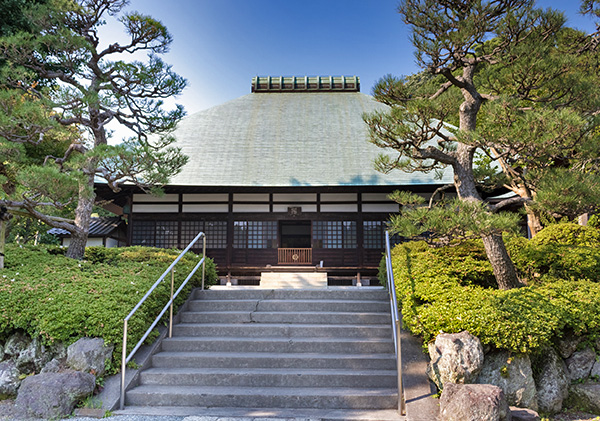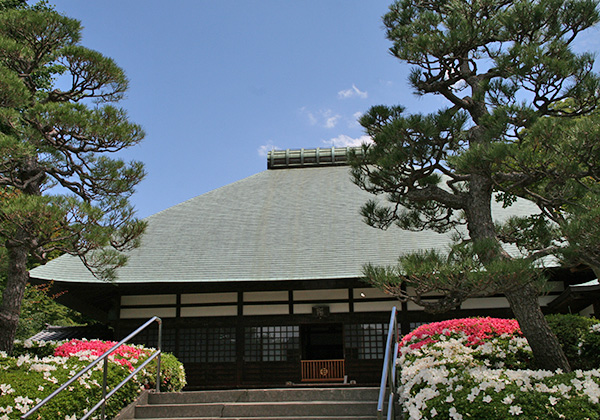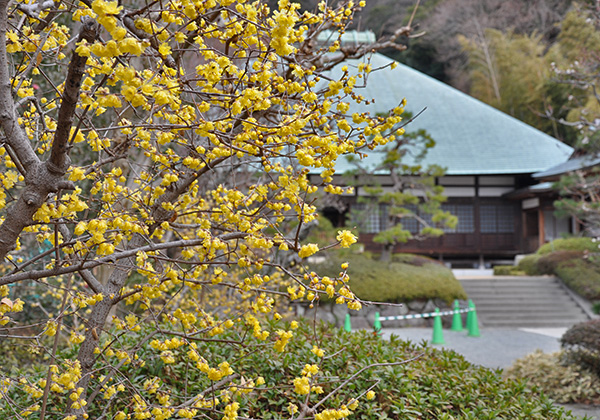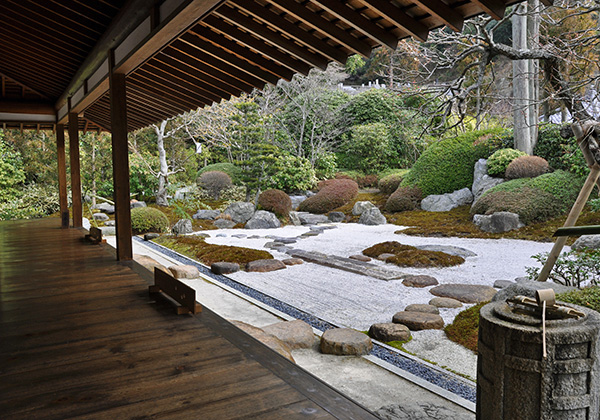Jomyoji
| Official Name | Tokasan Jomyoji {Pronounced toh-kah-san joe-myo-gee} |
|---|---|
| Religious sect | Kenchoji School, Rinzai (Zen) Sect, Buddhism |
| Founded | in 1188 by Yoshikane Ashikaga {yo-she-kah-neh ah-she-kah-gah} |
| Founding priest | Gyo-yu Taiko {gyo-you tie-koh} |
| Main object of worship | Statue of Shaka Nyorai {shah-kah nyo-rye} |
| Address | 8-31, Jomyoji 3-chome, Kamakura, Kanagawa 248-0003 (show route from current location ) |
| Location | 2 kilometers east northeast of Kamakura Station |
| Time needed to get there | 30 minutes |
| Admission | JPY100 |
| Open | 9:00 - 16:30 |
| Phone number | 0467-22-2818 |
| Restrooms | Available |
Historical Overview
Originally, the Temple was called East Gokurakuji {goh-koo-rah-koo-gee} belonging to the Shingon sect. Priest Gyo-yu Taiko (1163-1241) was a disciple of Priest Eisai Myo-an {a-sigh myo-an} (1141-1215), who first introduced Zen Buddhism to Kamakura and became the founding priest of Jufukuji. At the time of founding, however, Zen Buddhism was not yet firmly established. Yoshikane Ashikaga (1154-1199), the founder, shared the same great-grandfather with Yoritomo Minamoto (1147-1199) , the founder of the Kamakura Shogunate, and was a brave samurai helping Yoritomo defeat the Taira clan. As a matter of fact, Yoshikane's wife was a younger sister of Masako Hojo (1157-1225), or Yoritomo's wife.
When another priest Ryonen Geppo was named as the chief priest, the Temple chose the denomination of Zen Buddhism around 1258 under the sponsorship of Sadauji {sah-dah-woo-gee} Ashikaga (1273-1331), father of Takauji Ashikaga who established the Ashikaga Shogunate. At the same time, the Temple changed its name to the present Jomyoji. Priest Geppo was a disciple of Priest Doryu Rankei {doh-ryu ran-kay}, the founding priest of Kenchoji. Sadauji helped expand the Temple and produced a number of great priests. At its peak, the Temple had as many as 23 sub-temples. Throughout the Muromachi Period (1336-1573), it wasprotected and patronized by the Ashikaga family as their prayer hall, and ranked fifth of the Five Great Zen Temples in Kamakura. With the Kamakura Governor's office and residences located at the east side of the Temple, however, the area sometimes turned battlegrounds because of the power struggles involving governors, vice-governors in Kamakura and the Shogun in Kyoto. Every time the battles erupted, structures around here were burnt down or ruined. (Photo: Kisen-an garden)
In addition, a series of fires ravaged the Temple after the Muromachi Period and it continued to dwindle without getting any patronage. Today, the grounds of the Temple are "Historic spot" designated by the national government.
This is the only Temple among the Great Five Zen Temples that does not have direct connections with the Hojo family. Like Hokokuji across the street, the Temple is closely associated with the Ashikagas and its well-known crest (two horizontal bars in a circle) appears on the offertory box placed before the entranceof the main hall.

Tea-room Kisen-an {kee-sen-an}

On the left of the main hall is a beautiful garden and a guest room called Kisen-an. It is new, rebuilt in 1991 by a Kyoto gardener. The original Kisen-an was built around 1580 by the Temples' priests to have tea ceremonies.Fee is 660-yen (Macha with dry Japanese sweets),1100-yen (Macha with traditional Japanese sweets called namagashi ) , open from 10:00 to 16:00. The sand and rock garden is called Karesansui {kah-reh-san-sooy} in Japanese and it well fits Zen temples.





